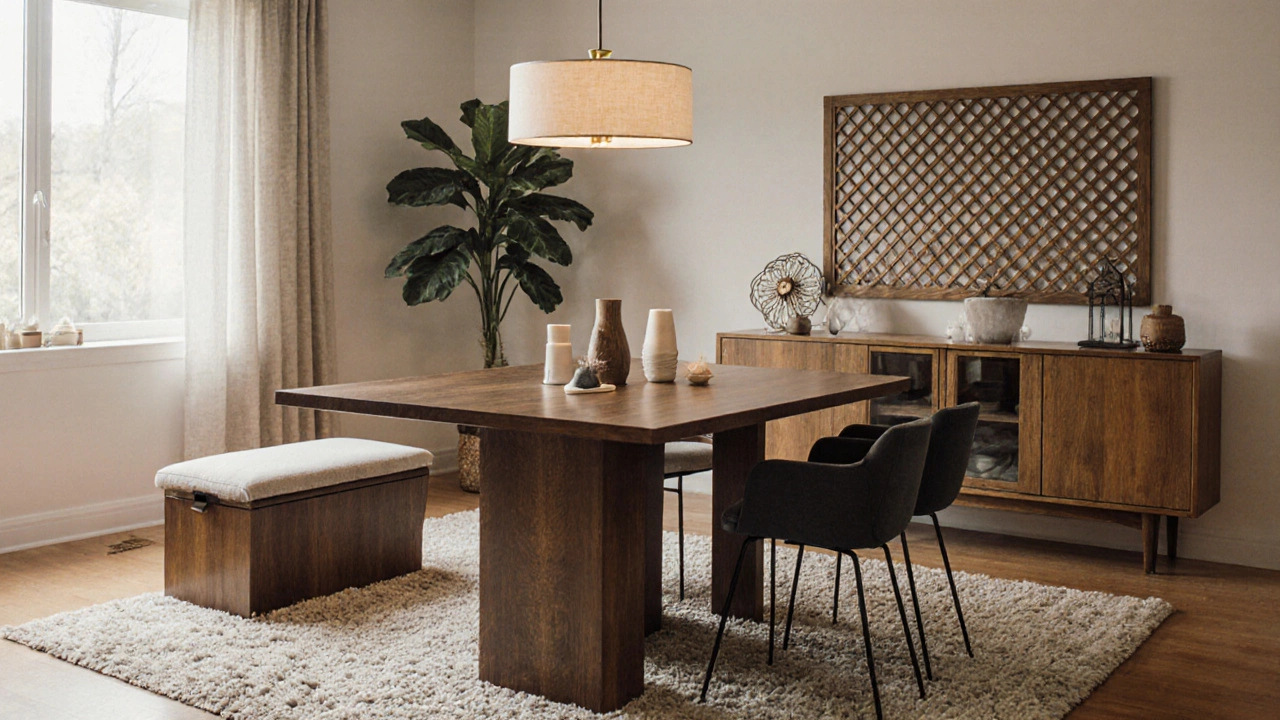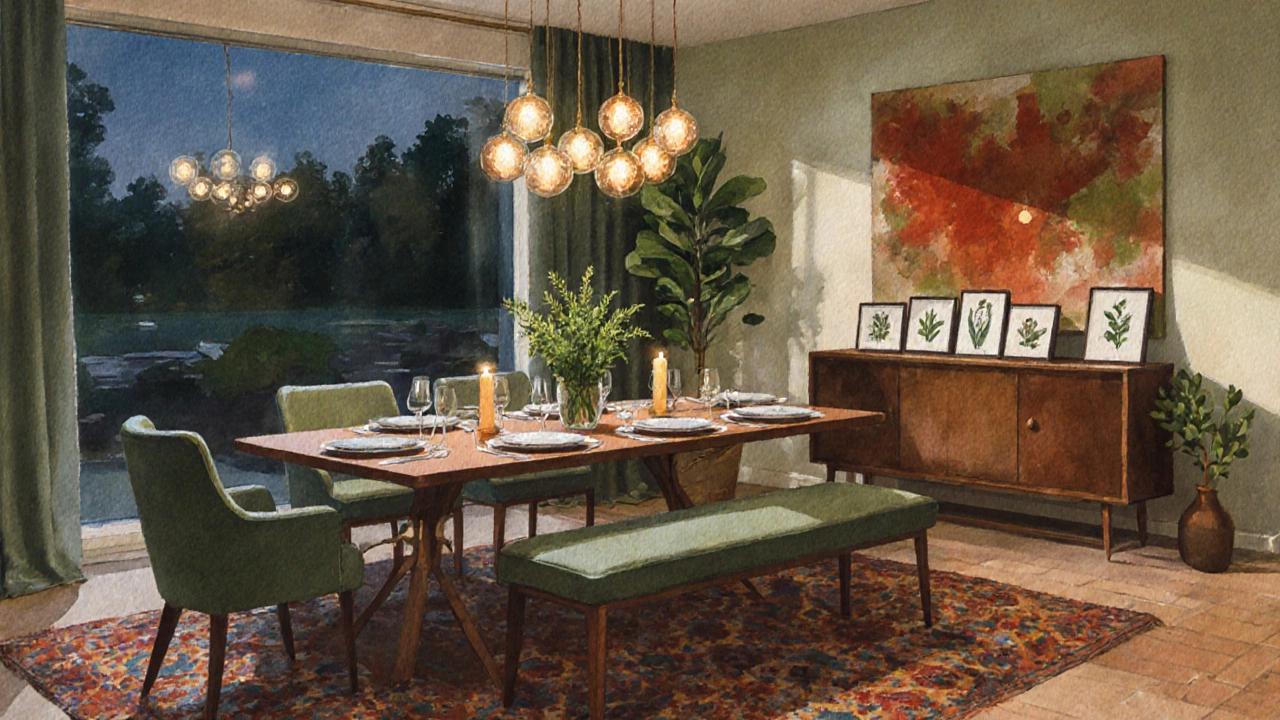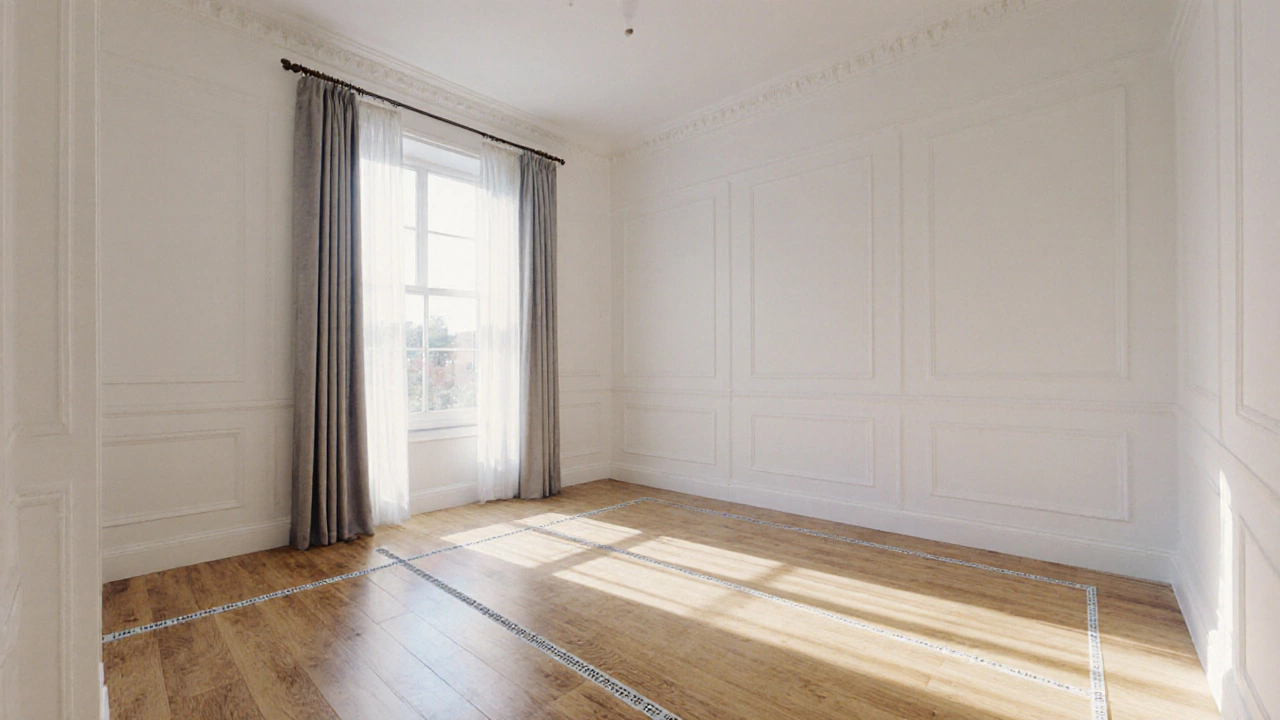Dining Room Layout Calculator
Calculate Your Perfect Dining Room Layout
Enter your dining room dimensions to see what furniture fits perfectly and how to arrange it for maximum comfort and style.
Got a dining room that feels a bit too roomy? You’re not alone. Lots of homeowners end up with a space that looks empty, echoing every footstep. The good news is that with a thoughtful dining room layout, you can turn that hollow area into a cozy, functional hub for meals and gatherings.
Key Takeaways
- Measure and map the room before moving anything.
- Pick a focal point - usually a table or a view - and build around it.
- Use multi‑purpose furniture like benches or sideboards to add depth.
- Divide the room visually with rugs, lighting, or room dividers.
- Layer décor (plants, art, mirrors) to create a lived‑in feel.
1. Start with a Clear Assessment
Before you buy anything, get a true sense of the space. Grab a tape measure, sketch a rough floor plan, and note door swings, windows, and existing utilities. Knowing the exact square footage helps you avoid oversized pieces that will dominate the room.
While you’re sketching, think about traffic flow. A 36‑inch clearance around the table keeps chairs moving smoothly. If the room is unusually long, consider breaking it into zones - a dining area plus a casual lounge or a reading nook.
2. Define a Focal Point
Every well‑designed room has a focus. In a dining room, the table usually takes that role. If you already have a table, size it appropriately. For a room that feels empty, a larger statement table can anchor the space. If you love flexibility, a Dining table is a rectangular or round piece of furniture where people gather to eat, often made of wood, glass, or metal that can be paired with extendable leaves for extra guests.
When the table is set, arrange everything else in relation to it - chairs, sideboards, and lighting all point toward the central gathering spot.
3. Embrace Smart Furniture arrangement is a planned layout of furniture pieces that maximizes function and flow within a room
Instead of pushing everything against the walls, try a floating arrangement. Pull the table toward the center and surround it with a bench or chairs that have a slight offset. This creates a sense of intimacy and uses the middle area effectively.
Tip: Keep the table at least 12‑inch from the nearest wall to allow for a runner or decorative tray without crowding.
4. Add a Room divider is a freestanding screen or shelving unit that separates spaces while maintaining an open feel
Screen dividers work wonders in long, narrow dining rooms. Choose a wooden lattice or a tall metal frame with glass panels. This breaks up the length, adds visual interest, and can double as storage for extra linens.
If you prefer a softer touch, a tall indoor plant can also act as a natural barrier - see the next section.
5. Mix Up Seating with a Bench seat is a long, upholstered or wooden seating element that accommodates multiple people along a wall or under a table
Benches slide neatly under the table when not in use, saving space compared to a traditional chair set. Opt for a bench with a hidden storage compartment to stash table linens or board games.
Pair a bench on one side with two or three chairs on the opposite side for a balanced, casual look.
6. Introduce a Sideboard is a low, wide storage piece often used in dining areas to hold dishes, silverware, and serveware
A sideboard adds height variation and plenty of storage. Place it against a wall opposite the table or use a narrow console if you’re short on depth. A sideboard with glass-front cabinets doubles as a display case for decorative items, which adds personality without clutter.
Choose a piece that’s about 1/3 the room’s width so it feels proportional.

7. Anchor the Floor with an Area rug is a fabric or woven mat placed on the floor to define spaces, add warmth, and protect flooring
Rugs are a quick way to fill empty floor space. Pick one that’s large enough to sit under the front legs of the table and chairs. A rectangular rug that’s at least 8‑by‑10 feet works for most dining rooms.
Textured or patterned rugs add visual depth, while a solid neutral rug lets other décor shine.
8. Light It Right with Pendant lighting is a suspended light fixture that hangs from the ceiling, often used to highlight a dining table
A striking pendant or chandelier draws eyes upward, making the room feel cozier. Position the fixture 30‑inches above the table surface for optimal illumination.
For a modern vibe, choose a minimal metal cage or a trio of small globes. If you love a warm glow, a brushed brass fixture with a fabric shade works beautifully.
9. Dress the Walls with Wall art is a decorative piece such as a painting, print, or sculpture hung on a wall to add personality and visual interest
Large-scale art or a gallery wall can fill vertical space. Choose pieces that echo the colors in your rug or table linens for a cohesive look.
If you’re tight on budget, framed botanical prints or a simple mirrored panel can create the illusion of depth.
10. Bring in Indoor plant is a living green organism kept inside for decoration and air quality improvement
Plants add life and soften hard edges. Tall floor plants like fiddle leaf figs or columns of snake plants can act as natural room dividers. Smaller potted herbs on the sideboard bring aroma and practicality.
Remember to choose low‑maintenance varieties if you’re not a green thumb.

11. Build Custom Built‑in cabinets are wall‑mounted storage units that blend seamlessly with the architecture, often used to hide clutter
If you have the budget, custom cabinetry can fill awkward gaps, especially along longer walls. Glossy white cabinets make the space feel brighter, while dark wood adds warmth.
Include glass‑door sections to display fine china or decorative bowls.
12. Decision‑Making Cheat Sheet
| Option | Typical Size | Best Use | Price Range (USD) |
|---|---|---|---|
| Extended Dining Table | 72‑84" length | Core gathering piece | $500‑$2500 |
| Bench Seat | 48‑60" length | Space‑saving seating | $150‑$800 |
| Sideboard/Console | 48‑72" width | Storage & visual weight | $300‑$1500 |
| Room Divider Screen | 30‑48" height | Zone creation | $100‑$600 |
| Area Rug | 8‑12 ft | Floor coverage | $200‑$1200 |
| Pendant Light | 18‑30" diameter | Ambient focus | $120‑$900 |
13. Common Pitfalls to Avoid
- Choosing furniture that’s too large - it will overwhelm the room.
- Skipping a rug - bare floor makes the space feel unfinished.
- Neglecting lighting - a dim dining room feels empty.
- Over‑decorating - too many wall pieces create visual clutter.
- Ignoring traffic flow - keep paths clear for comfort.
14. Quick Implementation Checklist
- Measure room dimensions and mark traffic routes.
- Pick a focal piece (table or console).
- Choose a primary seating solution - chairs, bench, or mix.
- Add a rug that grounds the table.
- Install a pendant or chandelier for layered lighting.
- Introduce one or two decorative elements (art, plant, divider).
- Check clearance: 36‑inch around table, 30‑inch between chair backs.
- Live‑test the layout, adjust as needed.
By following these steps, you’ll turn that echoing dining room into a welcoming place where every inch works for you. Remember, the goal isn’t to fill every square foot but to create a balanced, functional environment that feels intentionally designed.


